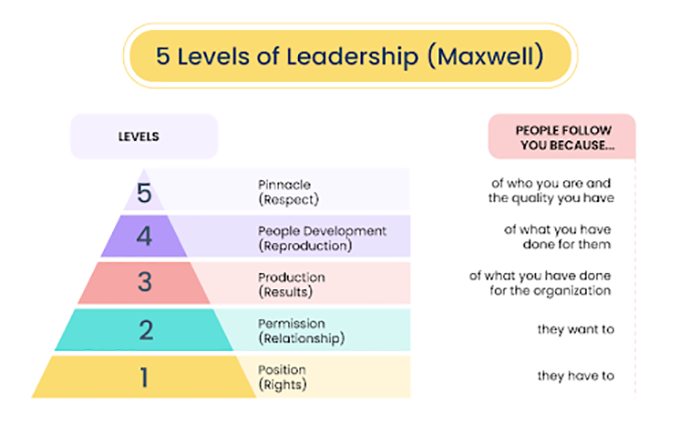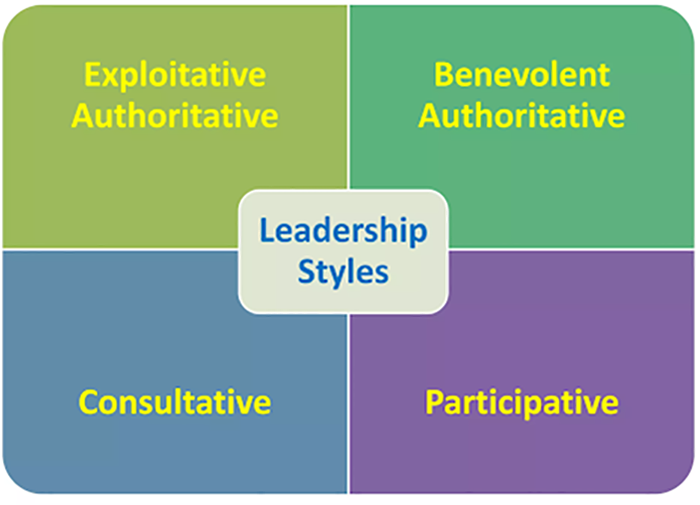Crafting the Art of Influential Practice Leadership
In the fast-paced realm of aesthetic practices, leadership isn’t just a role—it’s the catalyst for propelling your practice to remarkable heights.
Welcome to the topic “The Art of Influential Practice Leadership,” a segment of Aesthetic Practice Insights that delves into actionable strategies to help you ascend the leadership ladder and transform your practice into a thriving hub of innovation.
The Influential Leaders Growth Graph: Navigating Your Journey

Credit: Vantage Circle HR Blog
Imagine your leadership journey as a growth graph with distinct levels, each signifying a unique stage of development. From the foundational position level to the pinnacle of Leadership at Level 5, let’s explore each stage in-depth:
- Level 1: Position – Embark on your journey at this starting point, where authority is bestowed upon you by your title. This stage provides you with a foundation, a foothold from which you begin to understand the intricacies of leadership. However, remember that this is just the tip of the iceberg—there’s much more to explore and learn beyond this foundational level.
- Level 2: Permission – As you ascend to the Permission level, you’ll realize that leadership is more than just a title; it’s about forging connections and building trust. Here, relationships transform compliance into genuine commitment. It’s about making your team want to follow you, not because they have to, but because they truly believe in your leadership.
- Level 3: Production – This is where your leadership starts to manifest tangible results. You move beyond simply holding a title to becoming a driving force behind your practice’s achievements. As you enter this level, your leadership goes beyond authority; it’s about driving productivity, inspiring your team, and making a measurable impact on your practice’s success.
- Level 4: People Development – In this stage, you shift from just being a producer to becoming a developer of people. Your focus turns towards nurturing the potential of your team members, investing in their growth, and empowering them to take on leadership roles themselves. This is where your influence extends beyond just getting things done to create a culture of leadership and growth.
- Level 5: The Pinnacle – At the pinnacle of leadership, your influence transcends boundaries. You become a legacy-maker, a mentor, and a beacon of inspiration. Your leadership is not defined solely by your achievements but by the lasting impact you create. Level 5 leaders shape the practice’s culture, its future, and its enduring success.
Guiding Your Approach: The Four Leadership Styles
Understanding leadership styles is your compass throughout this journey.

Rensis Likert’s Four Styles of Leadership
These four styles serve as tools to shape your leadership approach, and knowing when to employ each one is vital:
- Dictatorial Style – Discover when to wield this approach, especially during times of urgency or safety concerns. However, be aware of its limitations as it may hinder creativity and morale.
- Authoritative Style – Strike a balance between control and growth. Use your authority to guide newcomers and address misuse of power while also empowering your team to contribute and innovate.
- Consultative Style – Embrace collaboration to solve complex problems and foster stronger relationships. This style allows you to tap into the collective wisdom of your team and drive innovative solutions.
- Participatory Style – Empowerment and innovation thrive in this style. Use it when you have a competent team, as it encourages creativity and ownership while elevating your practice’s growth potential.
Navigating Leadership Scenarios: When to Use Each Style
Your leadership style adapts to different scenarios:
- Dictatorial Style – Deploy during emergencies or critical decisions to ensure safety and order.
- Authoritative Style – Utilize when guiding newcomers or addressing instances of authority misuse.
- Consultative Style – Engage your team for creative problem-solving and decision-making during planning sessions.
- Participatory Style – Employ a competent team to stimulate innovation and creative thinking.
As you progress through these levels and styles, remember that your leadership journey is not just about reaching the pinnacle but about consistently growing, adapting, and guiding your aesthetic practice toward enduring success.
Three Keys to Your Leadership Style: Authority, Human Resources, Relationships
In your journey towards influential leadership within your aesthetic practice, three core keys play a pivotal role in shaping your leadership style. These keys—Authority, Human Resources, and Relationships—are the foundations upon which effective leadership is built.
- Authority: Your approach to authority shapes your leadership style. Striking a balance between asserting your authority and fostering a sense of ownership among your team is essential.
- Human Resources: Nurturing your team’s growth and investing in their development yields exponential returns in terms of innovation and productivity.
- Relationships: Building and maintaining strong relationships within your practice fosters trust, open communication, and collaboration.
Aligning the Keys with Your Goals:
To master influential leadership, align these three keys with your overarching goals. A balanced leadership style respects authority, empowers human resources, and nurtures relationships.
Self-Evaluation Questions: Reflecting on Your Leadership Approach
Engage in self-evaluation and adjust your leadership style to match your evolving goals. Doing so will result in a practice environment that thrives on shared values, commitment, and excellence.
To help get you started, here are some self-evaluation questions to help you reflect on your leadership approach:
- Authority:
- How do I balance asserting authority with fostering a sense of ownership and autonomy among my team members?
- Do team members feel comfortable approaching me with their concerns and ideas, or do they hesitate due to perceived authority barriers?
- How can I improve my communication of expectations and decisions to ensure clarity without being overly authoritative?
- Human Resources:
- Am I actively investing in the growth and development of my team members? How can I enhance their skills and capabilities?
- Do I provide learning and skill-building opportunities that align with individual and organizational goals?
- How do I recognize and harness my team’s diverse strengths and talents to drive innovation and productivity?
- Relationships:
- How strong are the relationships I have built with my team members and colleagues? Are they based on trust, respect, and open communication?
- Do I actively seek and encourage feedback from my team, and how do I use it to improve both personally and as a leader?
- What steps can I take to strengthen collaboration and foster a sense of unity within the practice?
- Leadership Styles:
- Do I adapt my leadership style based on the situation and the needs of my team? Can I recall instances where I effectively used different styles to address diverse challenges?
- Have I ever encountered situations where my chosen leadership style hindered progress or communication? How can I avoid such pitfalls in the future?
- How well do I understand my team’s competence and readiness to handle more participatory leadership styles? How can I encourage creativity and ownership without overwhelming them?
- Alignment with Goals:
- Are my leadership approach and style aligned with the overarching goals of the practice? How can I better integrate authority, human resources, and relationships to support these goals?
- Do team members perceive my leadership as contributing to their personal growth and the practice’s success? How can I enhance this perception?
- How can I create a balance between fostering innovation and maintaining stability in the practice, considering the different aspects of my leadership approach?
- Continuous Improvement:
- What areas of my leadership approach do I believe are effective, and where do I see opportunities for improvement?
- How do I handle setbacks or situations where my leadership approach may not yield the desired outcomes? How can I learn from these experiences?
- What steps can I take to ensure that my leadership approach evolves over time to meet the changing needs and dynamics of the practice?
Remember:
These self-evaluation questions are meant to encourage thoughtful consideration of your leadership approach. Use them as a starting point to assess your strengths, identify areas for growth, and refine your approach to become a more influential and effective practice leader.
Unleash Influence in Your Aesthetic Practice
Influential leadership propels success. From levels to styles, you’re striving to create a practice that thrives on innovation and growth. At MastermindForAesthetics, we’re dedicated to guiding your transformational journey. Get ready to elevate your practice, make an indelible impact, and cultivate a culture of excellence.
Stay tuned for more empowering insights in “Aesthetic Practice Insights.” Your path to becoming an influential practice leader starts now.



